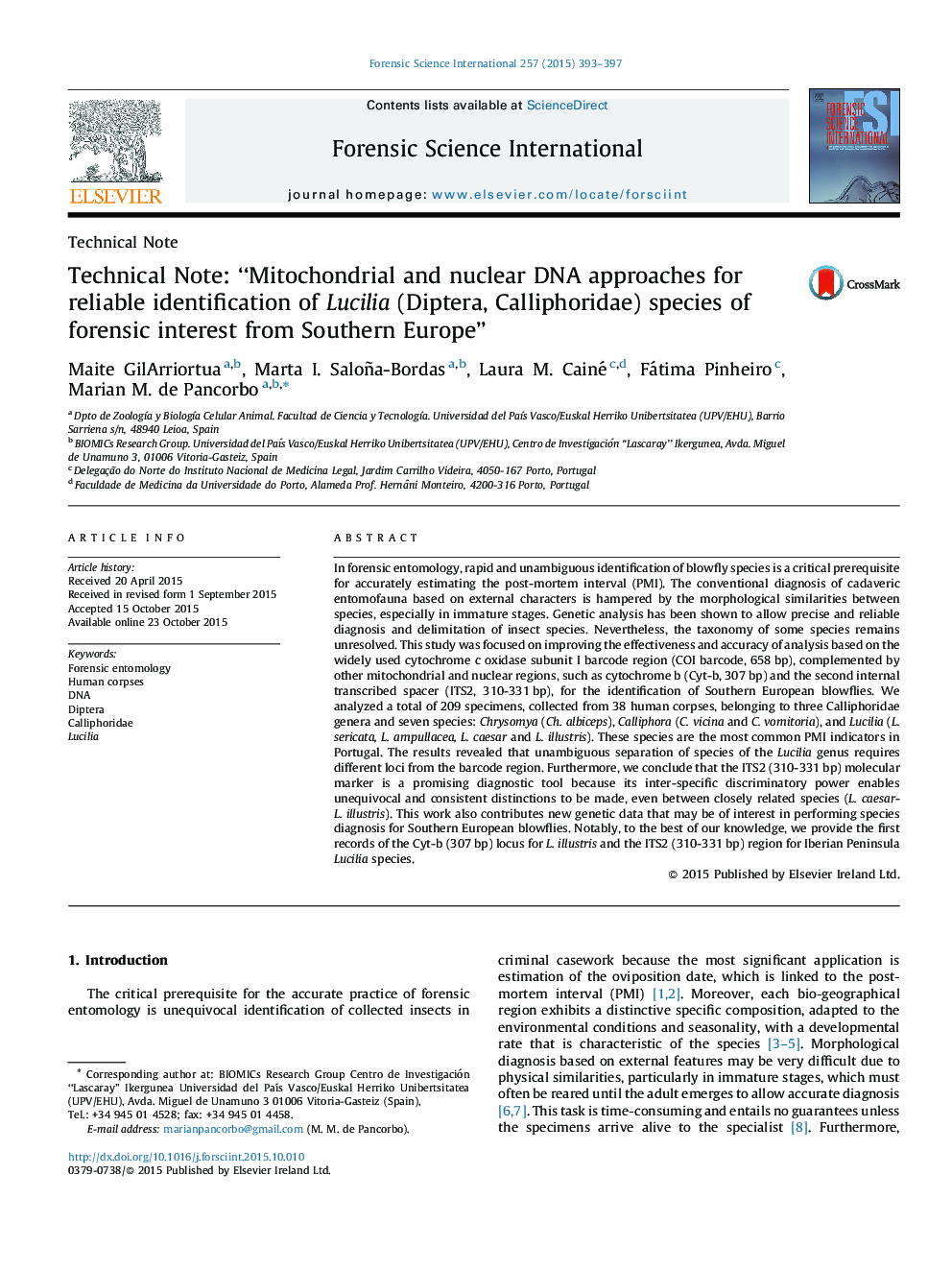| Article ID | Journal | Published Year | Pages | File Type |
|---|---|---|---|---|
| 6552040 | Forensic Science International | 2015 | 5 Pages |
Abstract
In forensic entomology, rapid and unambiguous identification of blowfly species is a critical prerequisite for accurately estimating the post-mortem interval (PMI). The conventional diagnosis of cadaveric entomofauna based on external characters is hampered by the morphological similarities between species, especially in immature stages. Genetic analysis has been shown to allow precise and reliable diagnosis and delimitation of insect species. Nevertheless, the taxonomy of some species remains unresolved. This study was focused on improving the effectiveness and accuracy of analysis based on the widely used cytochrome c oxidase subunit I barcode region (COI barcode, 658Â bp), complemented by other mitochondrial and nuclear regions, such as cytochrome b (Cyt-b, 307Â bp) and the second internal transcribed spacer (ITS2, 310-331Â bp), for the identification of Southern European blowflies. We analyzed a total of 209 specimens, collected from 38 human corpses, belonging to three Calliphoridae genera and seven species: Chrysomya (Ch. albiceps), Calliphora (C. vicina and C. vomitoria), and Lucilia (L. sericata, L. ampullacea, L. caesar and L. illustris). These species are the most common PMI indicators in Portugal. The results revealed that unambiguous separation of species of the Lucilia genus requires different loci from the barcode region. Furthermore, we conclude that the ITS2 (310-331Â bp) molecular marker is a promising diagnostic tool because its inter-specific discriminatory power enables unequivocal and consistent distinctions to be made, even between closely related species (L. caesar-L. illustris). This work also contributes new genetic data that may be of interest in performing species diagnosis for Southern European blowflies. Notably, to the best of our knowledge, we provide the first records of the Cyt-b (307Â bp) locus for L. illustris and the ITS2 (310-331Â bp) region for Iberian Peninsula Lucilia species.
Related Topics
Physical Sciences and Engineering
Chemistry
Analytical Chemistry
Authors
Maite GilArriortua, Marta I. Saloña-Bordas, Laura M. Cainé, Fátima Pinheiro, Marian M. de Pancorbo,
